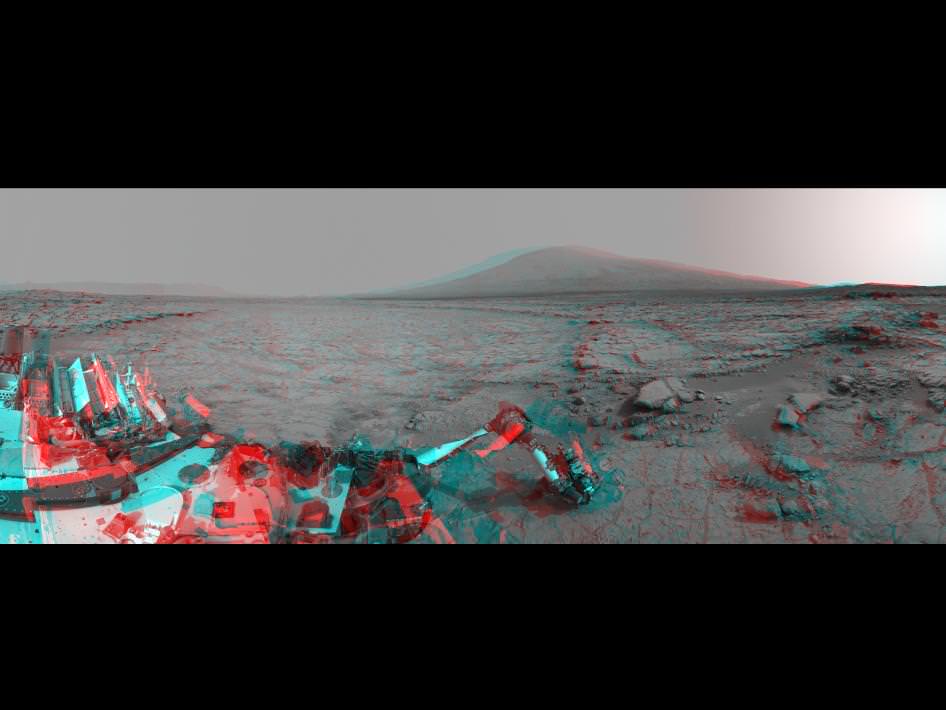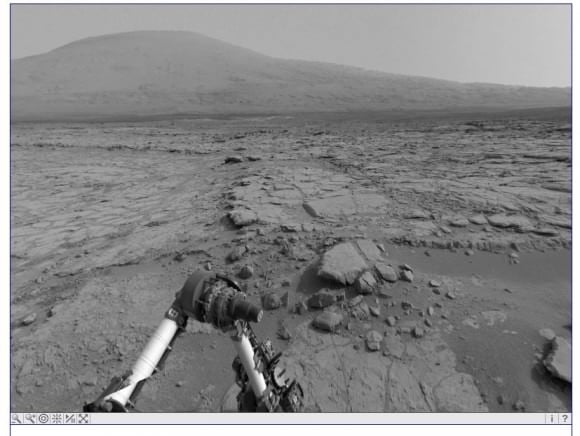Above is a recent 3-D version of a panoramic view from NASA of the Curiosity Mars rover, made from dozens of images from both the left and right Navcams. But panoramic specialist John O'Connor has also put together a non-3-D interactive view of this scene of the rover and its surroundings. The images were taken during the 166th, 168th and 169th Martian days, or sols, of Curiosity's work on Mars, which equates to Jan. 23, 25 and 26, 2013 here on Earth.
Check out the interactive panorama here, or below. It will probably come up as full-screen, and you can use your mouse to interact and move around. Or just hit 'escape' if you'd rather not be in full-screen mode. You can still use the mouse to move around wherever you want to go, or use the toolbar on the lower left for more options. This is a high-def view so feel free to zoom in for details!
[caption id="attachment_101762" align="aligncenter" width="580"]
Click on this image to get to the interactive panorama on NASAtech. Via John O'Connor. [/caption]
We haven't heard much from Curiosity lately because Mars is still in solar conjunction, where Mars and Earth are on opposite sides of the Sun from each other, meaning communications are basically worthless between the two planets. Our powerful Sun interrupts radio transmissions between Earth and the Mars rovers and orbiters, and data to and from the spacecraft might get corrupted. So, to avoid any problems, the spacecraft (and spacecraft engineers and scientists) take a little time off; the solar conjunction serves as a little spring break. But things should be back at full-throttle by next week.
For the 3-D view above (click on it to see a larger view), use red-blue glasses with the red lens on the left. It spans 360 degrees, with Mount Sharp on the southern horizon.
In the center foreground, the rover's arm holds the tool turret above a target called "Wernecke" on the "John Klein" patch of pale-veined mudstone. On Sol 169, Curiosity used its dust-removing brush and Mars Hand Lens Imager (MAHLI) on Wernecke. About two weeks later, Curiosity used its drill at a point about 1 foot (30 centimeters) to the right of Wernecke to collect the first drilled sample from the interior of a rock on Mars.
 Universe Today
Universe Today

